|
To the Spanish, who were among the region's earliest settlers, Manzanar
is the word for "apple orchard." To generations of another group
of people with a shorter history, Manzanar is associated with World War
II, when more than 10,000 Japanese Americans were held at Manzanar's hastily
developed "relocation center" during the hysteria of anti-Japanese
sentiment following the December 7, 1941, Japanese invasion of bombing
of Pearl Harbor.
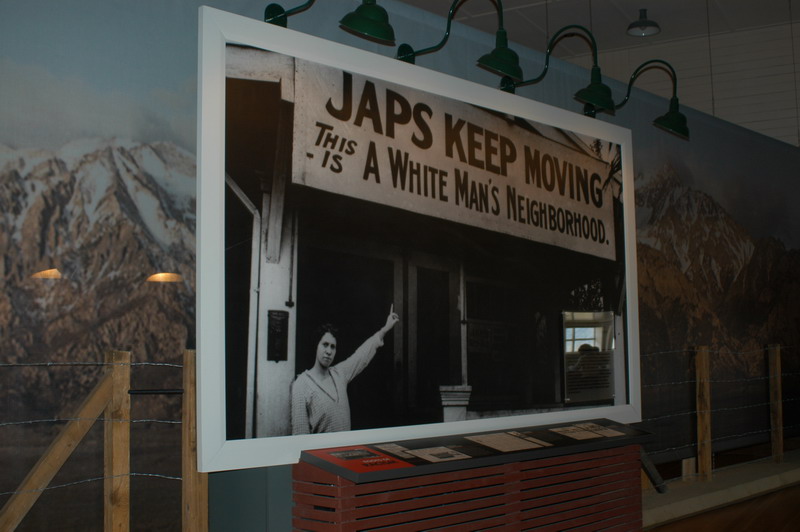 |
Visiting Manzanar National Historic Monument
is taking a glimpse at an unfortunate chapter in American history.
Located in Southern California's Owens Valley in the shadow of the
Sierra Nevada Range, Manzanar was one of 10 relocation camps established
by the United States government Within months, and without due process,
120,000 Japanese Americans, two-thirds of them American citizens by
birth, had been sent to camps because of concerns that sympathetic
Japanese might assist their homeland and, to a lesser degree, fears
that angry Anglo-Americans might seek vengeance again "Japs." |
| |
|
Manzanar gained national attention from the book, "Farewell to Manzanar."
It remains the only of the 10 with an active interpretive program that
tells the story of life in an internment camp. Another camp, Minidoka
in Idaho, is also under the wing of the National Park Service, but it
is not yet developed. Just south of the Oregon-California border, Tule
Lake, which became the most infamous because it became the largest and
was designated a segregation center for "disloyal" internees
in July 1943, hopes to develop a small interpretive area around one of
its remaining buildings, a stockade called by Japanese Americans as a
prison within a prison.
Manzanar and the other camps were created following Executive Order 9066
in February 1941. The order authorized the relocation and-or internment
of anyone who might threaten the U.S. war effort. Centers were eventually
located at Manzanar and Tule Lake in California, Minidoka in Idaho, Topaz
in Utah, Poston and Gila River in Arizona, Granada in Colorado, Heart
Mountain in Wyoming, and Rohwer and Jerome in Arkansas. The first Japanese
Americans who arrived at Manzanar in March 1942 were volunteers who helped
build the camp. By September, more than 10,000 Japanese Americans were
packed into 504 barracks within a 500-acre housing section, which was
enclosed by barbed wire fences and eight guard towers. Insights to life
at camp are told in "Farewell to Manzanar," a book by Jeanne
Wakatsuki Houston and James Houston about her childhood years at the camp.
| A sense of that life is created through a variety of
carefully planed exhibits in Manzanar's former auditorium, which has
been redeveloped into a National Park Service interpretive center.
Originally built by internees in 1944, it housed a gymnasium and a
stage used for plays, graduation ceremonies and other social functions.
When Manzanar was opened April 24, 2004, the auditorium had been converted
into a visitor center. Along with serving as a starting point for
a self-guided auto tour of the old camp, it features a variety of
exhibits intended to give visitors a sense of camp life. |
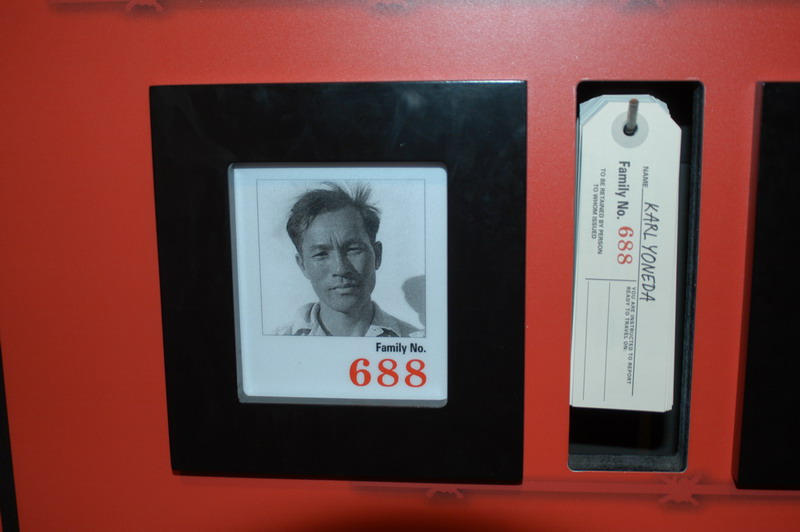 |
| |
ID Badge for our "Guests."
|
For those forced to live at Manzanar, it was often a difficult experience.
On December 6, 1942, military police shot at Manzanar internees who were
protesting the arrest of another internee. Eleven people were shot, and
two died from injuries. One of Manzanar's most poignant reminders of the
past is the center's cemetery. A monument was commissioned by internees
to honor the 135 people who died at Manzanar. Stonemason Rozo Kado, who
also designed and supervised the construction of the camp's sentry and
police posts, supervised its construction. Each family donated 15 cents
to buy cement. Three characters on the front side of the monument translate
to "soul consoling tower" or, based on the translation, "monument
to console the souls of the dead.
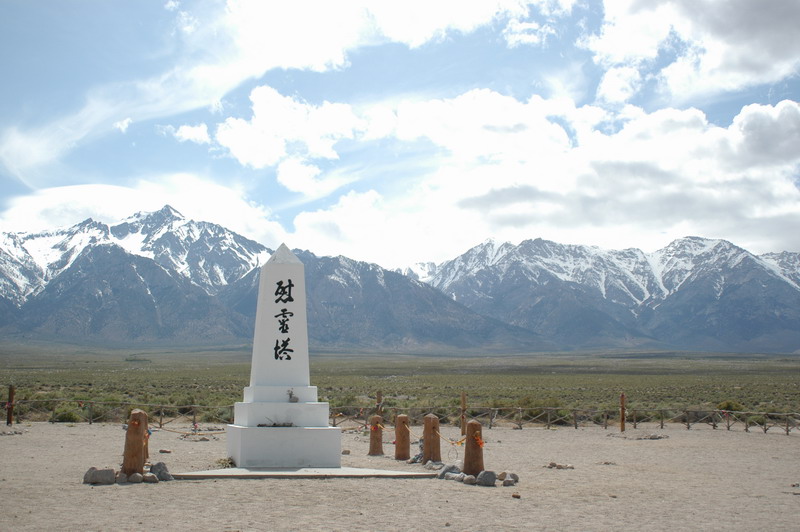 |
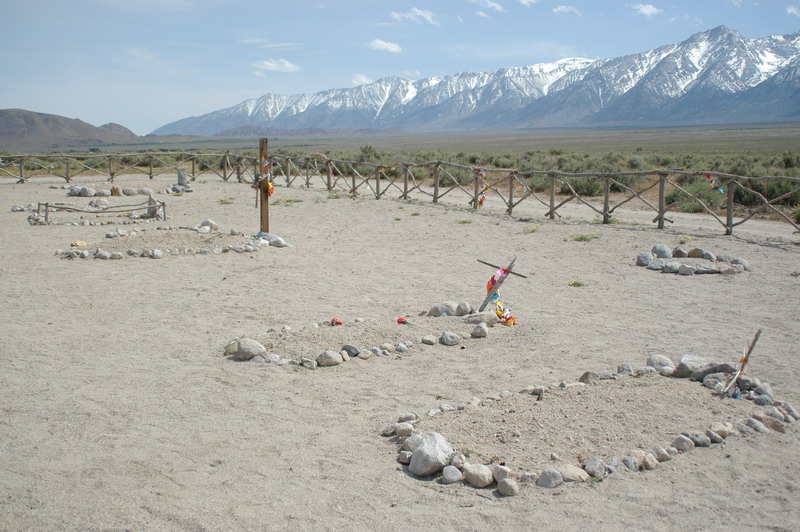 |
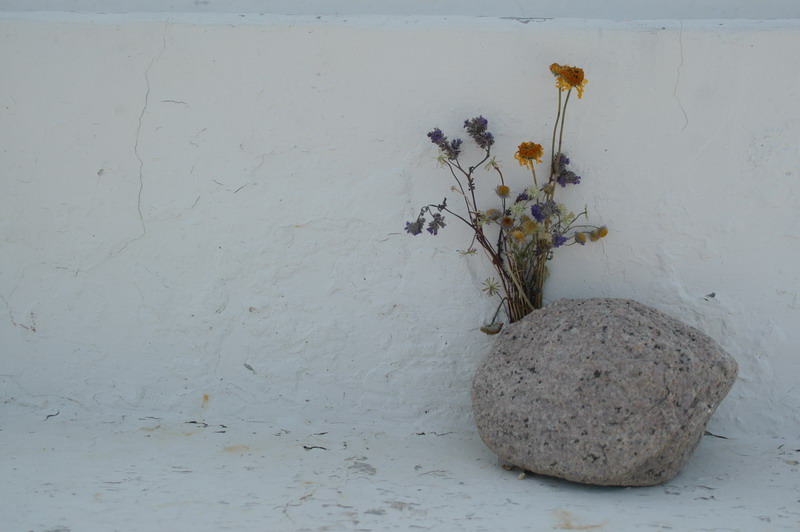 |
|
Manzanar's cemetery
|
Graves in the Sand
|
Flowers for the Dead
|
Of the original barracks, only one remains. Plans call for rehabilitating
the barracks to better give visitors a sense of camp life. The camp had
504 barracks organized into 36 blocks. Between 20 and 400 people lived
in each block, with 14 barracks, each divided into four rooms. Each block
had shared men's and women's toilets and showers, laundry and mess hall.
One outdoor faucet provided water for each barracks. Up to eight people
lived in 20- by 25-foot rooms. Most of the Japanese Americans sent to
Manzanar were from Los Angeles, 200 miles away, or communities in California
and Washington. Most were unprepared, and unaccustomed, to the harsh summer
heat and below freezing temperatures of winter. Because of its desert
environment, the camp was frequent made miserable when strong winds carried
dust and sand.
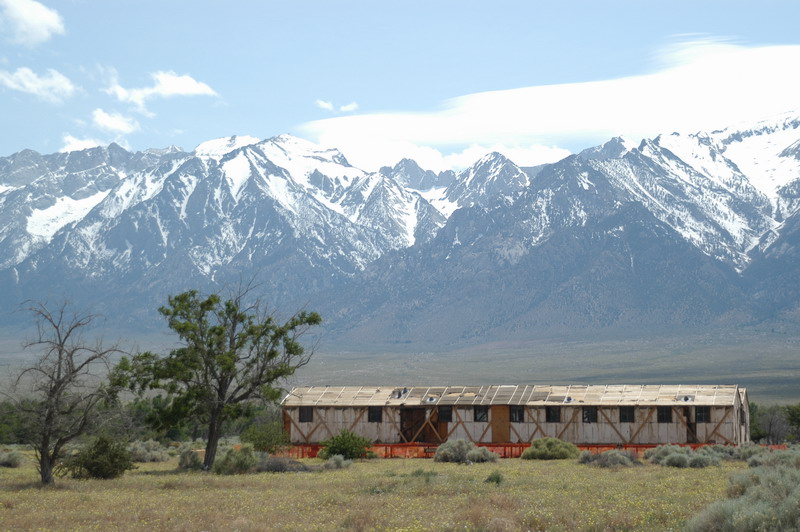 |
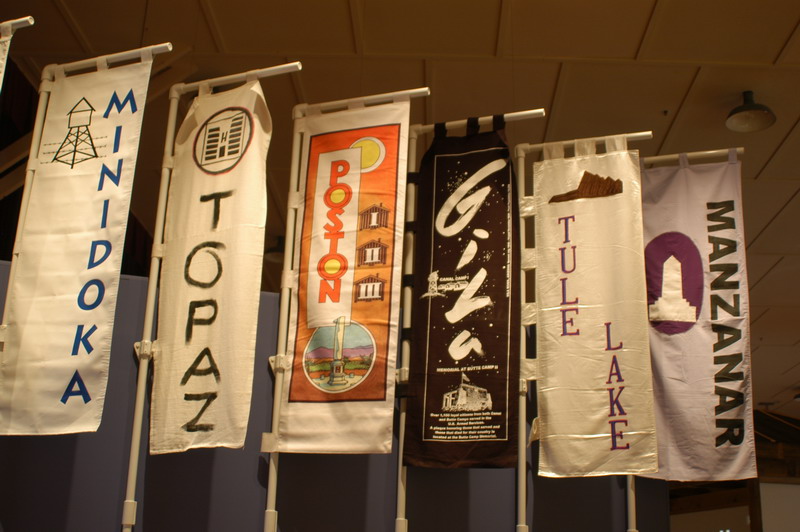 |
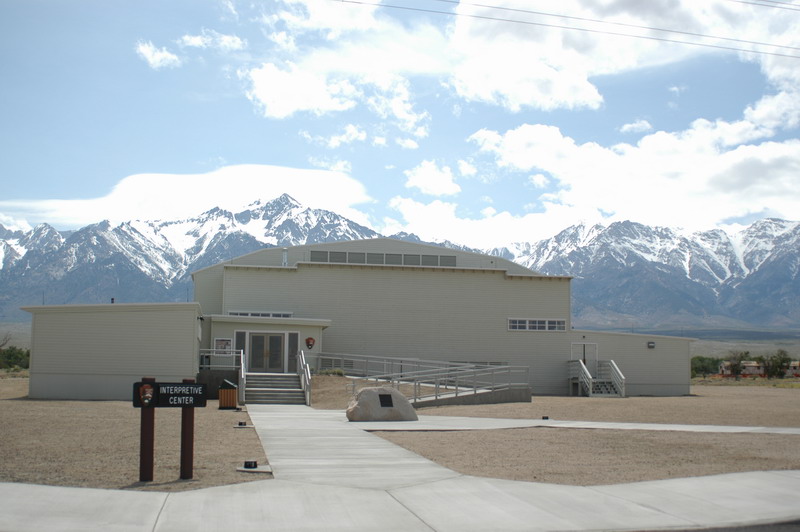 |
|
Last of hundreds of barracks
|
Banners of the 10 Camps
|
Interpretive Center
|
A 3.5 mile auto tour bisects the camp. While simple glimpses out a car
window provide a sense of the camp, it's also worthwhile to around sections
of the camp, especially through rock gardens created by internees to create
a sense of atmosphere and beauty, and the cemetery. It's possible to ponder
the past while walking through the grounds and seeing scattered remnants,
including concrete pier blocks where barracks and other buildings once
stood. Most of the driving routes stops show where various camp locations
, including a high school, newspaper, baseball fields, Catholic church,
children's village, Buddhist temple and other structures, were located.
At most, all that remains are foundations or concrete slabs. Future plans
include eventually reconstructing or restoring two barracks, a mess hall
guard tower and the rock gardens.
As WWII turned in favor of U.S. troops, the number of internees gradually
decreased. After hitting a peak population of 10,046 in September 1942,
the camp's population shrunk to 6,000 in 1944. The last few hundred internees
left in November1945, three month's after the war ended with Japan's surrender
on August 14, 1945.
Over the past 30 years, annual Manzanar Pilgrimages have been held the
last Saturday of April, with the cemetery serving as the prime gathering
place. Featured activities include an interfaith memorial, guided tours,
displays, presentations and music. For information, contact the Manzanar
Committee, 1566 Curran Street, Los Angeles, CA 90026 or telephone (323)
662-5102. For information on Manzanar, visit the Web site at www.nps.gov/manz
or write Manzanar National Historic Site, P.O. Box 426, Independence,
CA 93526. Manzanar is about 200 miles from Los Angeles off Highway 395.
The camp is nine miles north of Lone Pine and six miles south of Independence,
where the Eastern California Museum exhibits include "The Story of
Manzanar, the Japanese American World War II Internment Center.
|